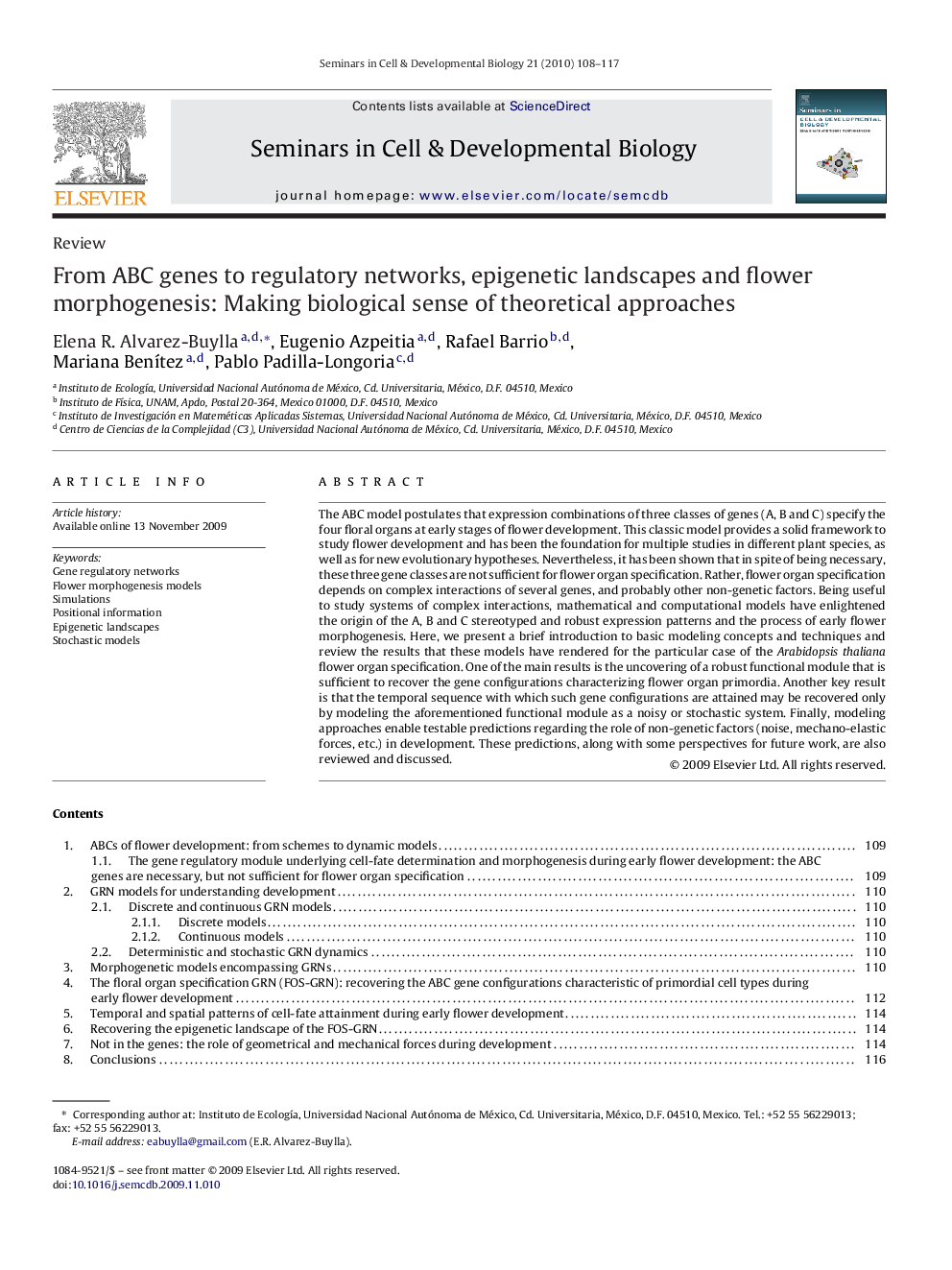| Article ID | Journal | Published Year | Pages | File Type |
|---|---|---|---|---|
| 10959273 | Seminars in Cell & Developmental Biology | 2010 | 10 Pages |
Abstract
The ABC model postulates that expression combinations of three classes of genes (A, B and C) specify the four floral organs at early stages of flower development. This classic model provides a solid framework to study flower development and has been the foundation for multiple studies in different plant species, as well as for new evolutionary hypotheses. Nevertheless, it has been shown that in spite of being necessary, these three gene classes are not sufficient for flower organ specification. Rather, flower organ specification depends on complex interactions of several genes, and probably other non-genetic factors. Being useful to study systems of complex interactions, mathematical and computational models have enlightened the origin of the A, B and C stereotyped and robust expression patterns and the process of early flower morphogenesis. Here, we present a brief introduction to basic modeling concepts and techniques and review the results that these models have rendered for the particular case of the Arabidopsis thaliana flower organ specification. One of the main results is the uncovering of a robust functional module that is sufficient to recover the gene configurations characterizing flower organ primordia. Another key result is that the temporal sequence with which such gene configurations are attained may be recovered only by modeling the aforementioned functional module as a noisy or stochastic system. Finally, modeling approaches enable testable predictions regarding the role of non-genetic factors (noise, mechano-elastic forces, etc.) in development. These predictions, along with some perspectives for future work, are also reviewed and discussed.
Related Topics
Life Sciences
Biochemistry, Genetics and Molecular Biology
Cell Biology
Authors
Elena R. Alvarez-Buylla, Eugenio Azpeitia, Rafael Barrio, Mariana BenÃtez, Pablo Padilla-Longoria,
